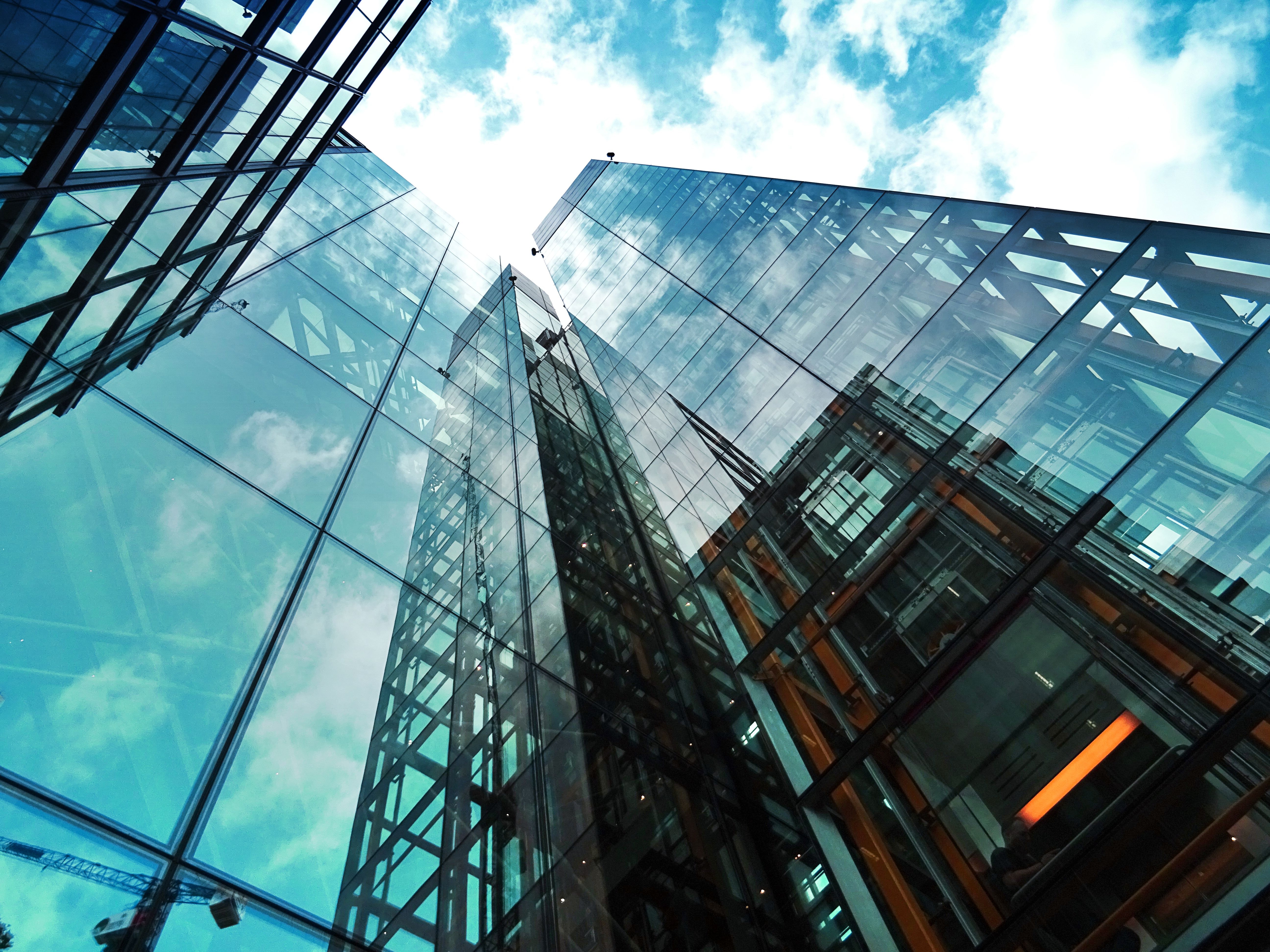Getting results with building LCA
As described in the earlier article Why building LCA?, BREEAM New Construction 2018 requires building LCA to be carried out for the new Mat 01 issue. The requirements in Mat 01 focus on rewarding good quality building LCA through comparison with a benchmark and options appraisal.
Starting with the project brief/requirements, designers use building LCA in BREEAM to appraise a range of different design options with the aim of improving the construction product related1 environmental performance of the building.
The flexibility of building LCA accommodates the fact that all buildings are different with specific project requirements and site constraints. The flipside of this flexibility means it can be difficult to know where to start looking for lower impact solutions. Compared with experienced building LCA users, those new to building LCA may feel the process is rather ‘trial-and-error’ and therefore off-putting.
So, although it is impossible to give specific advice that will apply to all projects, the following is intended to provide new building LCA users with somewhere to start.
Focus on the ‘Hotspots’
‘Hotspots’ are aspects of the design, anything from an entire construction element (roof, external wall etc.) to an individual product choice, that are contributing an excessive amount to the building’s total construction product related environmental impact. Building LCA software can be used for ‘hotspot analysis’ by identifying and exploring the ‘hotspots’ in a building design using a range of numerical and graphical results outputs.
Knowing which aspects are contributing the most allows the user to focus their efforts, and not waste time. However, the opportunity to reduce impacts will vary from one aspect of the design to another. If an appropriate range of alternatives for a suspected ‘hotspot’ have been explored and the impact contribution cannot be significantly reduced it may be that aspect is an unavoidably high impact one, and the next ‘hotspot’ explored instead.
Resource Consumption – Tackling Overdesign
In terms of reducing a building’s construction product related environmental impacts, nothing is as obvious as reducing the quantity of the products consumed. It is self-evident that lower consumption over the life of the building will mean that the impact of the building will be lower.
However, designers may be in the habit of specifying in a similar way every time – and for good reason – even when it regularly results in overdesign. Where there is insufficient time or resource to finetune the design, ‘belt and braces’ is a sensible approach. Designing more specifically for each project will result in extra cost which the client may not want to pay for. Moreover, more complex designs, such as a floor slab that varies in thickness to reduce quantities, may take longer to construct. These sources of extra cost may not necessarily be offset by savings from reduced quantities. Often time is more expensive than ‘stuff’.
A solution to this may be for design practices and constructors to invest in developing more resource efficient innovative approaches that will be suitable for rolling out onto future projects. Alternatively, early discussions with the clients to raise awareness and present options for including resource efficiency in design services could result in early buy-in and a willingness to invest to reduce environmental impacts. Building LCA is ideally suited for developing innovative lower resource consumption approaches.
Resource Consumption – Form Follows Function
‘Form follows function’ is a well-known design maxim which also applies to sustainable design – because it will likely result in reduced resource consumption. A building design that sets out to achieve the required practical function (such as X m2 of office space or 100 adequately sized hotel rooms) and nothing more will likely have lower resource consumption than a building design that achieves the practical function plus other ambitions such as prestige or architectural expression.
In short, if increasing the amount of resource consumption does not increase the building’s practical function then it is, in this respect, superfluous and wasteful. However, clearly, strictly limiting design to fulfil practical functions only is unlikely to be desirable or possible in many cases. Aesthetic and other non-practical considerations are an important part of good design. The solution is to find a balance through informed and conscientious use of the extra resources consumed.
The following illustrates examples of design features that may not be required to achieve the building’s practical function but do result in extra resource consumption: –
- Cantilevered structures: Extra structure required for the same loading.
- Highly glazed façades (more than is necessary to achieve good interior day light and views): Extensive solar shading or other heat-gain reducing elements.
- Adding cladding/surface products to substrates that have a functionally sufficient surface: Extra resource with no functional need.
- Floor layouts or features dictated by the external form of the building (e.g. building profile/shape, atria, recessed sections in a façade, responses to surrounding structures or sight lines): Inefficient ratio of usable floor area to façade surface area.
- Locating building-wide vertical features (lifts, stairwells, service risers or WCs) to suit a small number of ‘special’ floors at the expense of many ‘standard’ floors: Inefficient ratio of usable floor area to gross floor area.
- Larger than necessary centralised areas (e.g. reception areas, leisure areas, circulation spaces or WCs): Inefficient ratio of usable floor area to gross floor area.
- Locating heavy items on upper floors (such as heavy plant or swimming pools): Extra supporting structures.
- Removing existing elements and resources that could be reused (or recycled) on site: Unnecessary consumption of new resources.
Building LCA will quickly enable the design team to make informed decisions on the most effective way to ‘spend’ the environmental impacts occurring from extra resource consumption.
Alternative Construction Product Selection – Generic
Generic construction products are products that fall within a certain product category but where the manufacturer is not known or specified. For example, ‘plasterboard’ rather than ‘Joe Bloggs Plasterboard Type 1’. The environmental impact of a generic product is typically the industry average (mean) calculated from a range of actual impacts worked out for several representative manufacturer specific products in that category.
Often, a designer has a choice of generic construction products for a given construction element (e.g. external wall, upper floor, roof). For example, the structural fame could be either a suitable type of structural steel, reinforced concrete or timber. Per tonne, the impact of generics product will vary considerably, but, different quantities of each generic product are required to achieve the same function (e.g. a beam of structural steel may be lighter than a beam of reinforced concrete). Nonetheless, significant differences are likely to be found by changing from one generic product based solution to another.
An important factor to consider when choosing between generic products is the likely service life. Regular maintenance or several replacements of a product over the life of the building will dramatically increase its contribution to the overall impact of the building.
Because building LCA takes into account both the impacts of generic products, the quantities needed for each one and service lives, it is the best way to carry out meaningful comparisons and identify lower impact solutions.
Alternative Construction Product Selection – Manufacturer Specific
As stated above, environmental impacts for generic products is the average of several representative manufacturer specific products in that generic category. So, within the generic category, there will be a range of choices with different environmental impacts. Therefore, there is potential for reducing impacts by specifying products by a manufacturer who can demonstrate relatively lower impacts in their production. Comparisons between manufacturer specific products can be done by comparing environmental product declarations (EPD) – if they exist for all products to be compared. However, EPD contain a bewildering array of data with varying assumptions and other factors that make them hard or impossible to compare for all but experienced LCA practitioners.
Thankfully, where manufacturer specific products are included in a building LCA tool product library, straight forward comparisons can be made within the tool by exchanging one for another. Moreover, it is possible to see the significance of the change in the context of the building’s overall impact (see ‘Focus on the hotspots’ above). If changing from a product by one manufacturer to another makes only 0.01% of difference, then it is unlikely to be worth insisting the better one is installed – chose your battles!
In addition, because it is possible to identify the supply sources, transportation variations of different manufacturer specific products to site can be taken into account in building LCA. Transportation becomes particularly relevant for high volume products.
Substructure Design
The geology of a site can have a significant effect on the substructure design. For a given substructure design approach, poor geology will likely require substantially more resource consumption to provide the necessary stability than good geology. There are a number of ways to reduce this increased environmental impact. Finding another site with better geology would work well, but is unlikely to be a popular suggestion! Alternatively, building LCA can be used to explore different substructure design solutions, for example (in addition to the general guidance above) technological approaches more suitable for the site, better excavation and installation plant types and productivity, more favourable building-wide structural layouts or reuse of existing substructure. Building LCA can also be used to explore the impact of including, or not, substructure features like basements and, if the data is available, soil stabilisation.
High-rise vs Low-rise
High-rise buildings gain efficiency in the ratio of envelope to gross floor area because while each floor will typically have a similar amount of façade, the environmental impact of the roof and ground floor is divided by the number of floors – the more floors the better in this respect. However, above a certain height these efficiencies of scale are affected by the increasing amount of building wide vertical features (e.g. lifts, stairwells, service risers, columns) eating into the usable floor space, along with extra substructure (e.g. deep piling). At what height this occurs will depend on the specific site conditions and design approach – experimentation with building LCA tools can help to find the optimum height.
HVAC and Natural Ventilation
This blog does not cover the use of building LCA to optimise construction product related environmental impacts vs. operational energy use (such as including more of an insulation product to reduce operational energy). However, building services products have environmental impacts in their own right. As with other construction elements, the impact reductions from building services can be identified by exploring different system options and individual products. In addition, as covered in ‘resource consumption’ above, it is likely that installing fewer building services systems and components will be beneficial, so natural ventilation (i.e. no/minimal mechanical ventilation cooling) may be an option to explore. However, the opportunity for this will be linked to the project requirements and site constraints. For example, the floorplate width needed for cross ventilation may affect the ratio of usable floor area to façade surface area and might not be feasible on constrained sites. Due to its whole building approach, building LCA can be relied upon to capture these interactions and to find the best overall lower impact solution.
As building LCA becomes more widely used the construction industry’s understanding of the construction product related environmental performance of buildings will no doubt grow. Likewise, the guidance available – watch this space!
References
1(Sometimes referred to as ‘embodied’ environmental impacts but, strictly speaking, ‘embodied’ only refers to impacts that have already occurred up to the point of a finished construction product (i.e. the impacts that are embodied in a product). Whereas, BREEAM also includes impacts from construction products that occur after manufacture, for example, transport to site, installation, maintenance, repair and end of life.)

